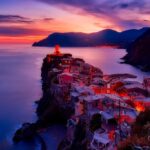How to Enjoy the Manaslu Circuit’s Buddhist Culture

The Manaslu Circuit Trek is more than just a thrilling adventure; it is a path of spiritual awakening through one of the Nepalese regions with the highest cultural diversity and yet left out of the beaten track. Three villages right in the shadow of the mighty Himalayan range.s When you walk through the villages (A multitude to be sure!) The trail hardly has observation of the Tibetan Buddha cult. Chhata Taintoli |Chuna/Martadi—map|The trail digs into Tibetan Buddhism: And so does everything else. The Buddhist influence is unmistakable, in every prayer flag flapping in the wind, each ancient monastery, and every smiley local who chirps a soft “Tashi Delek.” For the enthusiastic ones who seek out more than trekking and mountain climbing, Manaslu Circuit Nepal offers the particular attitude of those who are guided through their lives through religion, fortitude, and a near bond with nature.
Tibetan impact in the Manaslu area
The village within the Manaslu Circuit is ruled by Tibetan ethnic people who have been residing there for hundreds of years. Their languages, their dresses, their feasts, and their religions are all characterized by way of the influence of Tibetan Buddhism. You’ll trek through villages like Lho, Samagaon, and Samdo, in which you will come across conventional stone homes, spinning prayer wheels, and the way the stupas have formed the panorama. These tribes had once been linked to ancient Tibet through alternate historical salt, and their traditions are still very undiluted in the contemporary period. Hiking in this region of the Manaslu Circuit Trek, Nepal, provides trekkers a lifetime possibility to enjoy the Himalayan Buddhist lifestyle that has remained untouched for many years.
Experience trekking Manaslu Circuit: visit Monasteries on the Manaslu path
You will cross a lot of the Buddhist Monasteries, and most of them offer the facility for travelers to stay. Most impressive of them is in is Ribung Gompa above the village of Lho, silk-embossed on a hill above the lower Manaslu faces. Another spiritual tap, the Pungyen Gompa – near Samagaon and surrounded by the glacial peaks – is reached along a serene side trail. These are more than pretty homes; these are locations of peace and spiritual energy. Those monastic enclaves are inhabited by priests who live an existence of prayer and meditation, and to witness their rhythm of lifestyles is to connect more deeply with the spiritual soul of the area. During Trekking, anyway, to rest and meditate, we often stop at monasteries.
Mani Walls, Chortens and Prayer Flags.
There are basically three types of religious monuments in the Khumbu/Solukhumbu region and the nearby mountains: mani walls, chortens, and prayer flags.
Manaslu is decorated with Buddhist symbols. Long mani walls engraved with sacred mantras, like “Om Mani Padme Hum,” border many of the trails, and whitewashed chortens mark important spiritual places. Multicoloured prayer flags snap in the wind, high across passes and bridges, and are thought to take blessings and prayers on the breeze. Understanding this deepens your gameplay, because each of those aspects has a symbolic role in the balancing of nature, spirit, and community – nature because it is where all your actions and those of your opponents manifest. Trekking the Manaslu Circuit Trek Map, you will soon appreciate the spiritual geography of the area- villages are commonly spiritually centered around monasteries, and trails have been used for centuries by pilgrims. “Just visitors wandering through” cannot help but be touched by the piety that permeates the place.
Cultural Etiquette for Trekkers
To get the maximum out of the Buddhist tradition at the ManasluCircuitit you want to come with reverence and an open heart. If you input a monastery, dispose of your footwear and walk around the holy gadgets (stupa, prayer wheels) clockwise. Do no longer contact the prayer flags or disturb the offerings. Photography is fine in general, but ask before photographing individuals or religious ceremonies. Amongst teahouses and in homes, there is a communal acceptance of tea when offered as hospitality that is embedded as part of Buddhist practice. When meeting people through your guide, ask them about the halfway quirky, half-interesting beliefs and practices in which they were raised; it might lead to a fun culture exchange. Such little rituals make that bond stronger between you and the spiritual aspect that flows in the air of Manaslu Circuit, Nepal.
Religious and historical significance of the Manaslu Base Camp trek
Manaslu Base Camp Side-Trip: A highlight of the Manaslu Circuit Trek and one that’s not just about the views, it’s also about the soul. It is a holy area in the eyes of many locals, at the foot of a mountain revered as a deity in Buddhist cosmogony. The hike begins at Samagao, ascending through goat pastures high above Mount Manaslu anthe d icefall. Along the way, you may also pass below prayer flags strung up by monks to bless the climbers and the land. The walk up to Manaslu Base Camp transcends a simple physical adventure to a soundless pilgrimage through the cultural core of Nubri. But amid silence and snow and sky, there is a moment of wow and thanks here, at base camp.
Making the Most of the Culture With the Help of a Guide
The experienced local guide for trekking is the secret to uncovering the hidden cultures of Manaslu Trek. Most of the guides are local, and they know the customs, language, and religious significance of every place or village. They’ll also interpret rituals, explain the monastery art, and could even arrange to connect you with local families or other monks. Guides will also help ensure that you are respectful and welcomed in religious settings. They provide a path through mountains, yes, but also a pilgrimage through living tradition, with their instructive footnotes. This is when a porter-guide dons his cap to become your living guide and walks the Manaslu trek along.
Cultural Landmarks on the Manaslu Circuit Trek Map
The Manaslu Circuit Trek Map The complete trail Map of the Manaslu’s Circuit & Trekking in the Manaslu Region 1:100,000 scale map/cartography of Nepal Himalaya This can now only be purchased by US residents The Manaslu Zanskar Trekking map&nbp; 100K This is the newest map in the series and new for September 2015 from the the most up-to-date and accurate trekking map that is commercially available of the area. A number of the main religious structures, including monasteries, mani walls, and viewpoints, are marked. Planning your itinerary around these sites allows you to venture on a cultural trek. For example, if you made a special point to stop at both Ribung Gompa and Pungyen Go, you will be that much richer in trek experience. Finding these in advance can help you breeze back through oblivious or oblivious —, well, you know what I mean! As you walk the circuit, the map ceases to be a guide to a trail and instead becomes a spiritual roadmap, guiding you through millennia of faith and tradition.
Final reflections on Buddhist Culture in the Manaslu Circuit
The Manaslu Circuit Trekking provides a rare chance to get under the skin of some of the most remote Himalaya on the very roof world, where mountains coalesce with monasteries, nature hooks arms with culture and spirit with body in a way few places on earth can match. The Buddhist culture of this area is not a tourist attraction — instead, it’s part and parcel of daily life that is very much alive and practiced. It is to walk through these villages and encounter the stoic natures of people who can derive strength and dignity from the spiritual aspects of their lives in the most harsh of conditions. For the conscious trekker, it is no longer a walk on the wild side, but an adventure of the self; its forests and animals and waterfalls are embodiments of Buddhist instructions on cultivating positive mind states, or a divine abode. Whether ascending a high pass or sipping tea in a stone house, each minute you spend on the Manaslu Circuit in Nepal is meaningful — if you’re paying attention, and if you take the time to really look for it.





